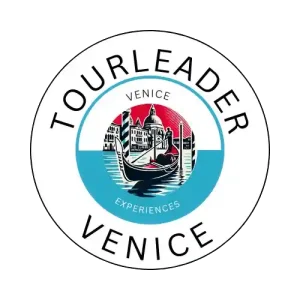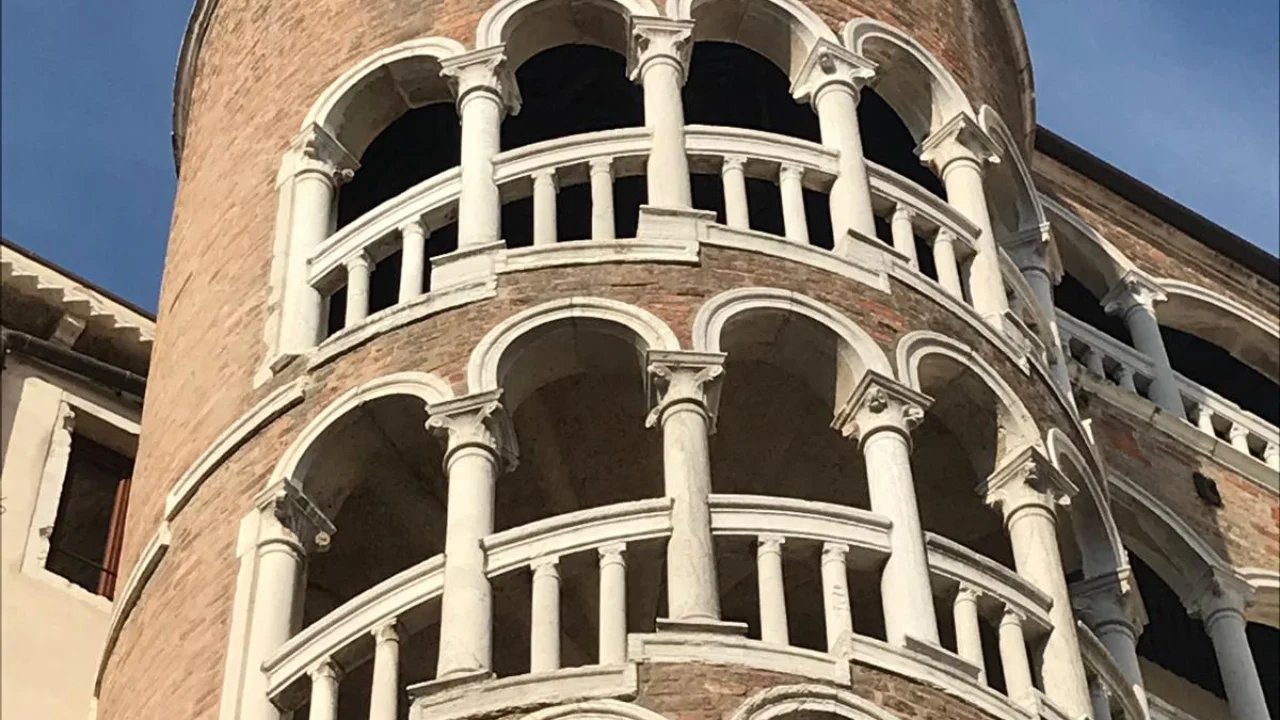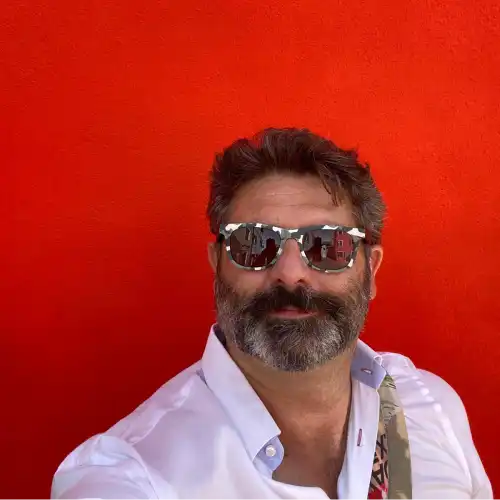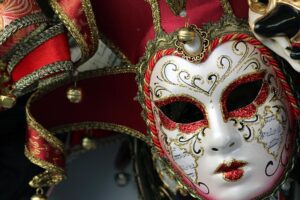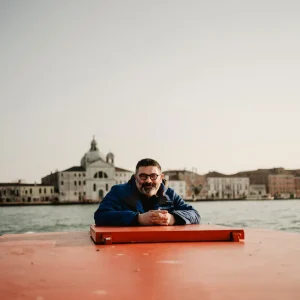Hidden Palazzos of Venice: Where Churchill Painted, Callas Sang, and Warhol Laughed
When travelers picture Venice, a few names instantly come to mind: Doge’s Palace, Ca’ d’Oro, maybe the Gritti Palace. But behind the postcard skyline lies another Venice — one whispered rather than shouted, where palazzos conceal private salons, forbidden romances, and world-changing conversations.
Along quiet canals and behind unassuming façades stand buildings that never make it into guidebooks, yet once hosted Winston Churchill, Maria Callas, and Andy Warhol. They’re not just places — they’re stages where art, politics, and personality intertwined.
And perhaps the most intriguing of all is Palazzo Volpi — a Grand Canal residence that has quietly welcomed the powerful, the glamorous, and the rebellious. Let’s open its doors and uncover the untold stories of Venice’s secret stage.
Palazzo Volpi: The Grand Canal’s Hidden Salon
The Palace Itself
Palazzo Volpi sits discreetly on the Grand Canal, a short glide from San Marco but worlds away from the tourist buzz. Its façade blends Renaissance lines and later embellishments, revealing a home that evolved with the city’s moods — elegant, slightly faded, but alive with memory.
Unlike most palaces, you won’t find ticket counters or crowds here. Palazzo Volpi is private — and that’s exactly what has made it a magnet for those seeking beauty without spectacle. Its stories survive through rumor, photographs, and the recollections of Venetians who still speak of “the nights when history danced there.”
🎨 Winston Churchill: The Prime Minister Who Painted in Peace
After leading Britain through the Second World War, Winston Churchill turned to painting as therapy — and few cities inspired him like Venice. Locals recall that during one of his post-war visits, Churchill stayed quietly at Palazzo Volpi, escaping official ceremonies for private hours with his canvas and cigar.
He reportedly set up his easel by an upper-floor window overlooking the Grand Canal, capturing gondolas gliding through the morning light. “The water moves, but the soul rests,” he’s said to have remarked — a sentiment any Venetian would understand.
In a city that had survived wars and tides for centuries, Churchill found something rare: stillness. His Venice watercolors remain some of his most delicate works, painted not as a statesman but as a man finally at peace.
Insider note: On our private Grand Canal tour, we pass the stretch where Churchill is said to have painted. The light there hasn’t changed — nor has the silence at dawn.
🎭 Maria Callas: The Diva Behind the Mask
For Maria Callas, Venice was more than a stage — it was a mirror of her own contradictions: beauty and tragedy, glamour and solitude. She sang triumphantly at Teatro La Fenice, yet her most intimate moments happened far from the spotlight, in the salons of Palazzo Volpi.
Venetian society adored her. They gossiped about her love affair with Aristotle Onassis and followed her every arrival by water taxi. But within the Volpi walls, Callas was said to shed her armor — rehearsing arias at midnight, or sharing long conversations about art and heartbreak under Murano chandeliers.
One witness claimed she once sang a few bars of Casta Diva to a tiny audience of friends after dinner — her voice echoing through the marble halls, pure and unguarded. It was Callas without costume: Venice’s most fragile secret.
Want to step inside La Fenice where her legend began? Join our Cicchetti & Wine Tour through her old neighborhood — where art, theater, and gossip still mingle over a glass of Prosecco.
🎨 Andy Warhol: Pop Art Meets La Serenissima
By the 1970s, Venice had become an irresistible playground for the international art crowd. During Biennale season, palazzos transformed into private galleries — and none drew more colorful guests than Palazzo Volpi.
Andy Warhol arrived with his entourage, wearing silver wigs and dark sunglasses, trailing photographers and collectors. The contrast could not have been sharper: 16th-century frescoes and 20th-century irony colliding under the same ceiling.
One story claims that Warhol, amused by the palace’s faded grandeur, quipped that “Venice is the ultimate ready-made artwork — you can’t improve it, only frame it.” Later that night, a Marilyn Monroe print was propped against a Tintoretto painting for fun — and suddenly, Pop met Renaissance.
Warhol loved the city’s contradictions: ancient yet outrageous, crumbling yet eternal. In Venice, even he couldn’t outshine the backdrop.
Pro tip: Visit the Peggy Guggenheim Collection nearby — where Warhol’s contemporaries still hang beside Venetian masters.
Other Palazzos With Stories to Tell
🏰 Palazzo Contarini del Bovolo — The Spiral of Vanity
Hidden near Campo Manin, this small jewel of a palace is famous for its spiral staircase — the Scala Contarini del Bovolo (“of the snail”). Built in the 15th century, it was less about utility and more about showing off. The Contarinis wanted something no other family had — a vertical symbol of status curling above Venice’s rooftops.
Climb its steps today, and you’ll see the city as those nobles once did: domes, chimneys, and campanili stretching toward the lagoon. But behind the beauty lies a message as modern as ever — in Venice, image was everything.
Tip: Book skip-the-line tickets to visit at sunset — the view alone explains centuries of Venetian ambition.
🏛️ Palazzo Grimani — Rome in the Lagoon
Most Venetian palaces celebrate Gothic lace or Baroque drama. Not this one. Palazzo Grimani, near Campo Santa Maria Formosa, feels like it was air-mailed from ancient Rome. Its rooms are filled with classical frescoes, antique busts, and marble gods — the result of one patrician’s obsession with antiquity.
For centuries, the Grimanis collected art that blurred the line between Venice’s watery world and the grandeur of Rome. Today, the palace is a museum — serene, cerebral, and strangely empty — the perfect place to lose yourself among myths and mosaics.
Local favorite: It’s one of the best “quiet” museums in Venice. On some mornings, you’ll have entire frescoed halls to yourself.
👗 Palazzo Mocenigo — Fashion, Fragrance, and Silk Dreams
Tucked inside Santa Croce, Palazzo Mocenigo doesn’t flaunt its beauty. Yet inside, it tells one of Venice’s most sensual stories — how fabric, scent, and style defined the city’s identity.
The Mocenigo family were tastemakers, trading silk and velvet when Venice ruled the luxury market of Europe. Today, the palace houses the Perfume Museum, where you can trace how merchants brought spices from the East and alchemists turned them into essences of desire.
Visitors can sample ancient recipes, admire brocaded gowns, and understand why Venice was — and still is — the city of elegance.
Pair your visit: With a tour of Tessitura Bevilacqua, the historic silk workshop where looms still weave magic by hand.
Why These Stories Matter
Venice isn’t just about architecture — it’s about the people who filled those palaces with life. Each of these stories shows a different Venice:
- 🖋️ Churchill’s Venice — a sanctuary of peace and art.
- 🎶 Callas’s Venice — a stage of beauty and heartbreak.
- 🎨 Warhol’s Venice — a fusion of past and pop.
These aren’t just names from history — they’re proof that Venice has always drawn those who crave inspiration, escape, or transformation. And that the city, in turn, quietly absorbs them all into her own legend.
Every palace, famous or forgotten, has its ghosts — of artists, nobles, or dreamers who once looked out at the same water you do today.
🗝️ Experiencing Hidden Venice With a Local Guide
Here’s the challenge: most of these palazzos are private or overlooked. Without someone who knows their stories, you might pass right by their façades, unaware that genius or scandal once lived behind those shutters.
That’s where Tour Leader Venice comes in. We unlock the layers that most travelers miss:
- 🎨 Pointing out hidden façades with extraordinary backstories.
- 🖌️ Showing where Churchill painted, where Callas sang, and where Warhol found irony in gold leaf.
- 🏛️ Arranging special access to private palaces when available.
- 🕍 Pairing each stop with artisans’ studios, secret cloisters, or quiet campielli that tell connected tales.
Because Venice isn’t only what you see — it’s what you learn to notice behind the marble. The most beautiful stories aren’t on postcards. They’re behind closed doors.
🔑 Explore Hidden Venice With a Private Guide →
💬 Conclusion: Palazzos That Whisper Stories
The Doge’s Palace may dazzle, but it’s the lesser-known palaces that truly whisper Venice’s soul. Palazzo Volpi — with its mix of politics, opera, and pop art — reminds us that Venice isn’t frozen in history. It continues to seduce thinkers, dreamers, and creators who can see beyond her façades.
Next time you drift along the Grand Canal, look closer. That quiet balcony with flowers might once have framed Churchill’s easel. That shuttered window might still remember Callas’s voice. That fading fresco might have reflected Warhol’s grin.
Venice keeps her secrets — but with the right guide, she just might share them with you.
🌊 Discover Venice Beyond the Postcards →
Can you visit the private palazzos where Churchill, Callas, and Warhol stayed?
Most of Venice’s historic palazzos, like Palazzo Volpi, remain privately owned and are not open to the public — but their stories are alive in the canals around them. The best way to experience these hidden gems is on a private Grand Canal tour with a local guide who can point out where Churchill painted, Callas sang, and Warhol mingled during the Biennale years. Some private visits can occasionally be arranged through our network of Venetian hosts.
What are some overlooked palaces in Venice worth seeing?
Beyond the Doge’s Palace, several lesser-known palazzos offer extraordinary experiences:
Scala Contarini del Bovolo — a spiral staircase built for vanity and views.
Palazzo Grimani — a serene, classical mansion near Campo Santa Maria Formosa.
Palazzo Mocenigo — home to Venice’s Perfume Museum and textile history.
Pair them with a visit to Tessitura Bevilacqua to witness real silk weaving in action.
How can I explore Venice’s hidden palaces and art history with a local expert?
Join a private walking tour of hidden Venice or a custom Grand Canal itinerary with Tour Leader Venice. Our guides share personal stories about the artists, nobles, and dreamers who shaped the city’s palaces — from Churchill’s watercolor mornings to Callas’s midnight arias. We can also combine visits with artisan studios, secret cloisters, or exclusive palace interiors, when available, for a complete “behind the façades” experience.
